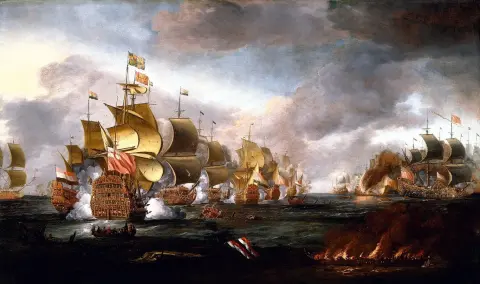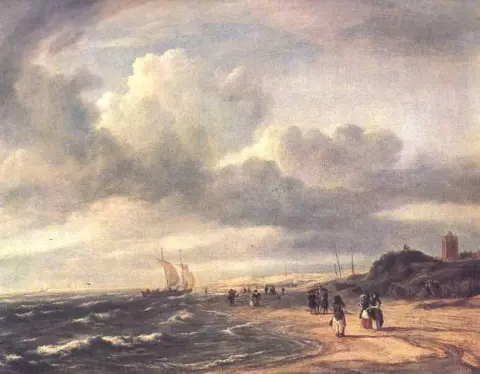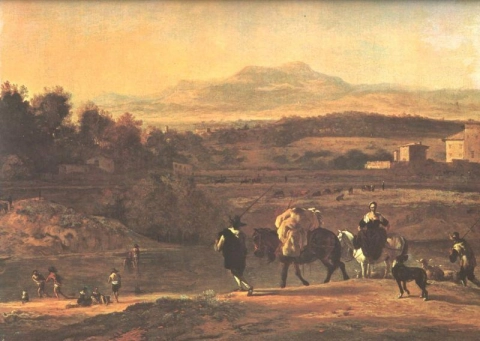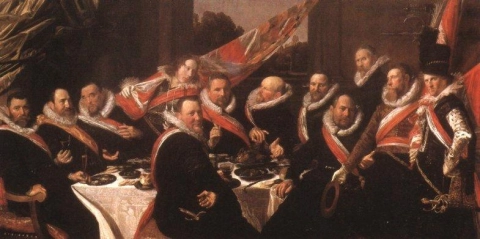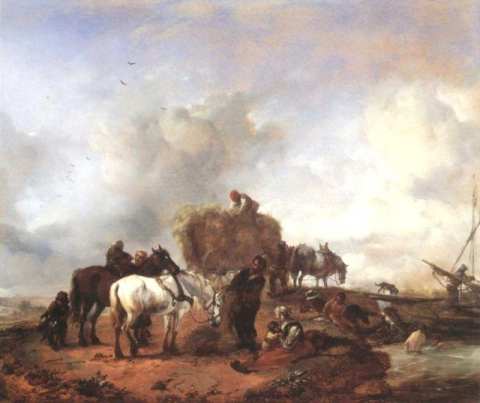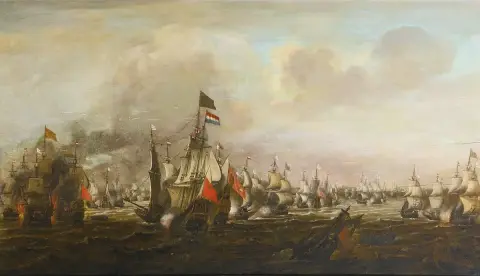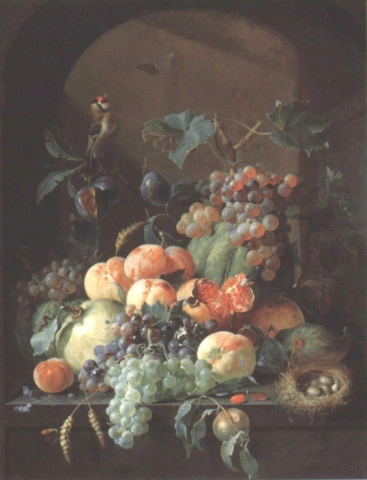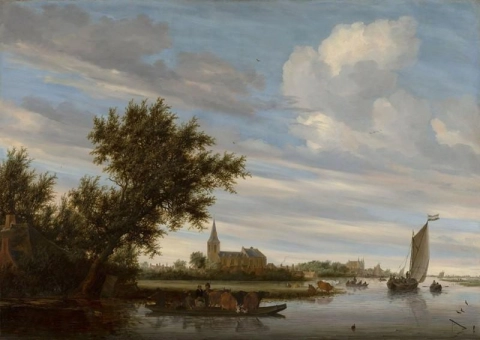Hand-painted painting reproductions - Movements - Dutch Golden Age
Imagine owning a museum-worthy piece of art, created by the greatest artists in history and reproduced by passionate and experienced painters. At POD, we offer you the opportunity to make that dream a reality. We reproduce the works of art of your favorite painters from the Dutch Golden Age art movement in the smallest details, so that you can enjoy them in your own home.
Our reproductions are made by experienced artists who use the best materials and techniques. We are committed to providing you with works of art of the highest quality, which will bring joy and inspiration to your family for generations to come.
Dutch Golden Age: A Flourishing of Art and Culture
The Dutch Golden Age (roughly spanning the 17th century) marked a period of immense cultural, economic, and artistic prosperity in the Dutch Republic. During this time, the Netherlands saw a remarkable rise in trade, urban development, and scientific discovery. This was also the era when Dutch art flourished, with some of the greatest masterpieces ever created in the Western world. The Dutch Golden Age is often associated with baroque style and its vibrant use of light, color, and realism. Artists of this period captured everything from grand portraits to still-life scenes, landscapes, and intimate domestic moments, all infused with extraordinary attention to detail and technical skill.
Origins and Historical Context
The rise of the Dutch Golden Age can be attributed to several historical factors. In the early 17th century, the Netherlands broke away from Spanish rule in the Eighty Years' War (1568–1648), leading to the formation of the independent Dutch Republic. This new political stability fostered economic growth, particularly due to the booming trade industry, which was bolstered by the Dutch East India Company and the establishment of a global trading empire.
The period also coincided with a growing middle class that had both the wealth and desire to patronize art. The Dutch bourgeoisie, seeking to display their newfound affluence, commissioned portraits, still lifes, and genre paintings, which became popular during this period. The Protestant work ethic, which emphasized modesty and hard work, also shaped the content of the art, leading to an emphasis on realism and everyday life rather than grand religious or mythological themes.
Characteristics and Techniques
Dutch Golden Age art is defined by its diversity of subjects and the technical mastery of the artists. Several characteristics set it apart from other artistic movements:
- Realism and Detail – Dutch artists were renowned for their meticulous attention to detail. They depicted everyday life with precision, whether it was a still-life of flowers, a bustling street scene, or an intimate portrait. These works were grounded in the observation of the natural world, with a focus on accuracy and texture.
- Light and Shadow – Much like the Baroque painters, Dutch Golden Age artists used chiaroscuro (the contrast between light and dark) to create depth and atmosphere. The manipulation of light is especially evident in the works of Rembrandt and Vermeer, where the light falls dramatically on faces, objects, and textures, adding emotional depth and realism.
- Genre Painting – One of the key innovations of the Dutch Golden Age was the rise of genre painting, which depicted everyday scenes of domestic life, interiors, and social activities. These works were often more intimate and less idealized than historical or religious subjects. Jan Steen, Pieter de Hooch, and Gerard ter Borch were notable figures in this genre, portraying both the joys and follies of daily life.
- Still Life – The still life genre flourished during the Dutch Golden Age, with artists creating intricate, highly detailed depictions of flowers, food, and material wealth. These paintings were often symbolic, reflecting themes of vanity and the transient nature of life, but also celebrating the material abundance of the era. Famous still life painters include Rachel Ruysch, Jan Davidsz de Heem, and Willem Kalf.
- Portraiture – Dutch portraiture from this period is renowned for its psychological depth and realistic portrayal of the subject. Unlike the more idealized portraits of aristocrats in other European countries, Dutch portraits were characterized by a focus on the individual’s personality, social status, and daily activities. Famous portrait artists include Rembrandt van Rijn, Frans Hals, and Jan Vermeer.
- Landscape Painting – Landscape painting was another significant genre during the Dutch Golden Age. Artists like Jacob van Ruisdael and Meindert Hobbema created sweeping landscapes, often with dramatic skies, waterways, and rural scenes. These paintings celebrated the Dutch countryside and the country’s new identity as a seafaring and agricultural power.
Themes and Significance
The art of the Dutch Golden Age reflects the cultural and social values of the period, including affluence, trade, protestantism, and a deep respect for nature and humanism. Below are some of the key themes explored by artists of this era:
- Everyday Life and the Bourgeoisie – Much of Dutch Golden Age art was focused on the lives of ordinary people. Genre paintings depicted domestic scenes, tavern scenes, and moments of social interaction. This reflected the rise of the middle class, who sought to express their wealth and cultural refinement through art.
- Vanitas and the Transience of Life – Still life paintings often included objects that symbolized the fleeting nature of life, such as skulls, decaying flowers, and hourglasses. These works were a reminder of mortality and the impermanence of worldly possessions. They also emphasized the theme of vanity and the futility of material wealth.
- Religious Tolerance – While much of European art was heavily influenced by the Catholic Church, the Dutch Republic’s Protestant values led to a more secular approach to art. This allowed for the development of a diverse range of subjects, from landscapes and still lifes to portraits and scenes of everyday life.
- National Identity and Pride – Art became a way for the Dutch to express their national identity and pride in their independence, economic prosperity, and maritime power. Seascapes, in particular, celebrated the Dutch navy and the country’s dominance in global trade and exploration.
Notable Artists and Their Influence
Several artists stand out as key figures of the Dutch Golden Age, and their works continue to be admired for their technical skill, innovation, and emotional depth. Some of the most influential artists include:
- Rembrandt van Rijn (1606-1669) – Often considered the greatest Dutch painter, Rembrandt is known for his mastery of light and shadow, as well as his psychological depth. His works range from grand historical and religious scenes to intimate portraits and self-portraits. "The Night Watch" (1642) and "The Anatomy Lesson of Dr. Nicolaes Tulp" (1632) are among his most iconic works.
- Johannes Vermeer (1632-1675) – Known for his serene domestic scenes, Vermeer created some of the most iconic works of the Dutch Golden Age. His paintings, such as "Girl with a Pearl Earring" (1665) and "The Milkmaid" (1658), are characterized by their use of light, delicate color palette, and intimate portrayal of everyday life.
- Frans Hals (1582-1666) – Hals was renowned for his portraits of the Dutch middle class and his ability to capture the personality and energy of his subjects. His loose, expressive brushwork was ahead of its time and had a significant influence on later artists. "The Laughing Cavalier" (1624) is one of his most famous works.
- Jan Steen (1626-1679) – A master of genre painting, Steen’s works often depicted humorous or moralizing scenes of domestic life, tavern activities, and social gatherings. His paintings, such as "The Feast of Saint Nicholas" (1665), were filled with lively characters and social commentary.
- Willem Kalf (1619-1693) – One of the greatest still-life painters of the period, Kalf’s works celebrated the wealth and luxury of the Dutch Golden Age. His "Still Life with a Silver Jug" (1660) showcases his meticulous attention to detail and ability to capture texture and light.
- Jacob van Ruisdael (1628-1682) – Ruisdael is celebrated for his sweeping landscapes, which often included dramatic skies, windmills, and expansive vistas. His works, such as "The Jewish Cemetery" (1655), reflect a deep reverence for nature and the Dutch countryside.
Legacy and Modern Appeal
The art of the Dutch Golden Age continues to be influential, with its focus on realism, psychological depth, and attention to detail having a lasting impact on subsequent artistic movements. Today, the works of Dutch Golden Age artists are housed in prestigious museums around the world, including the Rijksmuseum in Amsterdam, the Frick Collection in New York, and the National Gallery in London. The movement's influence can be seen in later artistic developments, particularly in the realms of realism and impressionism.
The enduring appeal of Dutch Golden Age art lies in its universal themes of human experience, its masterful technique, and its celebration of the beauty of everyday life. These works continue to captivate viewers with their precision, depth, and emotional resonance, making the Dutch Golden Age one of the most important periods in the history of Western art.
Where to Find Reproductions of Dutch Golden Age Art
For collectors and art enthusiasts, POD (Painting On Demand) offers high-quality reproductions of iconic works from the Dutch Golden Age. Whether you're interested in the dramatic portraiture of Rembrandt, the serene beauty of Vermeer’s interiors, or the rich symbolism of still lifes, these reproductions allow you to bring the masterful works of the Dutch Golden Age into your own collection.




